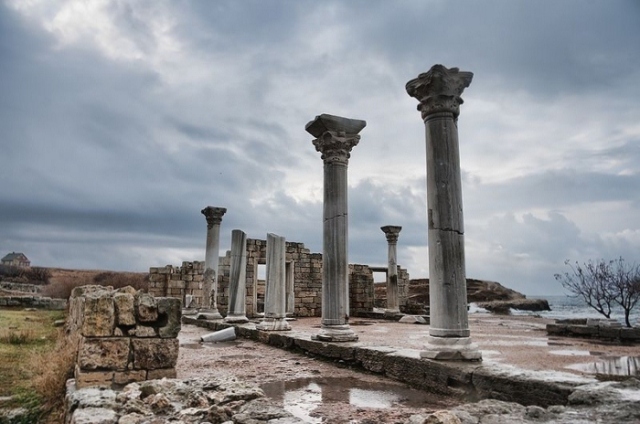A column is a free-standing cylindrical post or support, usually slightly tapering, which often has three distinct parts: base, shaft, and capital. The column is normally intended as a support but sometimes erected independently as a monument. The Greek Doric form is an example of a column that does not have a base.
A blocked column has alternate rectangular blocks and circular drums.
A Solomonic column is a spirally fluted (twisted) or shaped column that appears in Baroque architecture. Present at St. Peter’s Basilica in Rome, these columns were traditionally believed to have come from Solomon’s Temple, hence the name. Also commonly called a barley sugar column.
The ancient columns standing in the ruins of the Greek, Roman and Byzantine city of Chersonesos in the Crimea have been altered by nature and man.
Photo Credit: Wikimedia Commons.

